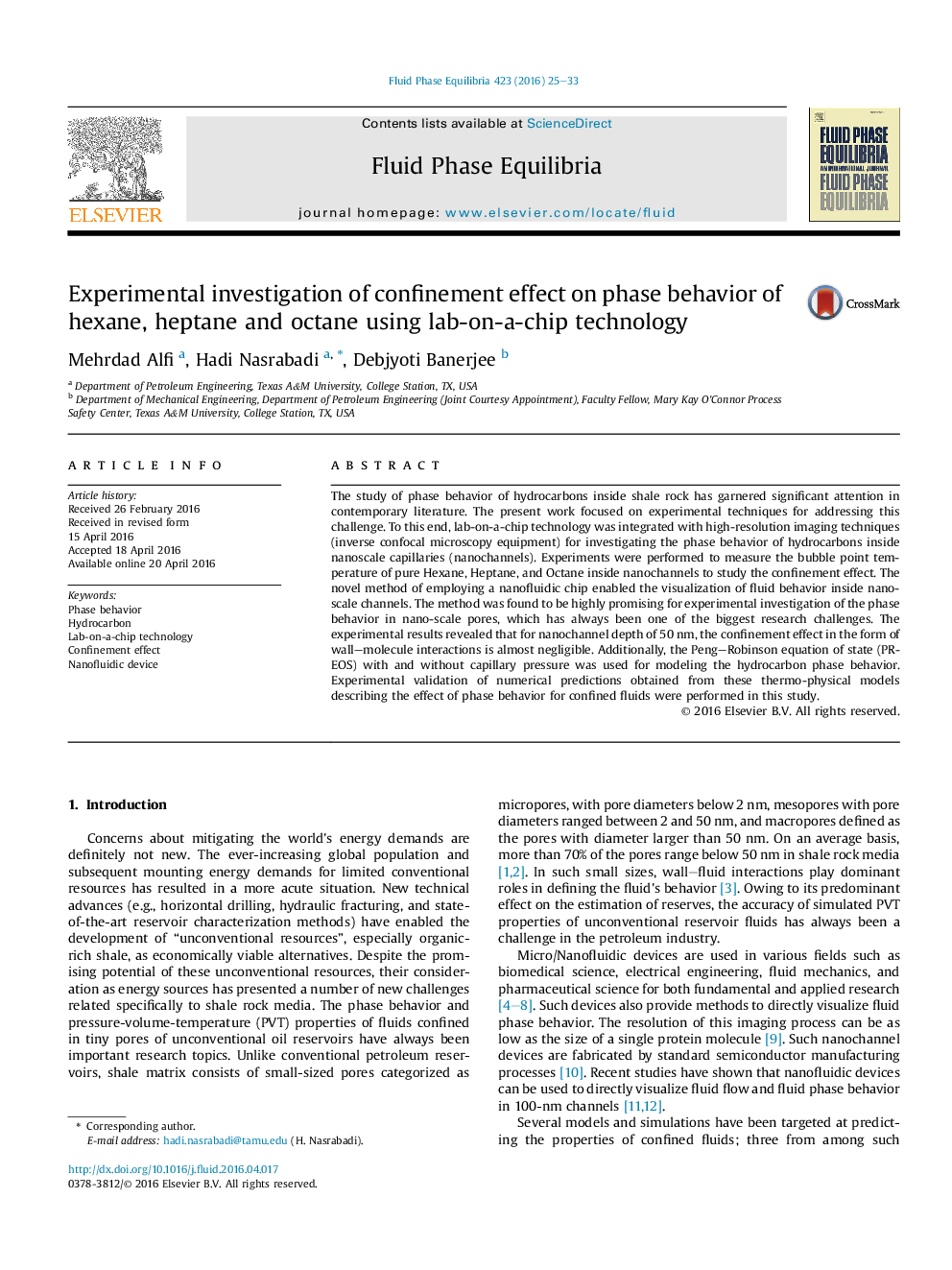| Article ID | Journal | Published Year | Pages | File Type |
|---|---|---|---|---|
| 200577 | Fluid Phase Equilibria | 2016 | 9 Pages |
The study of phase behavior of hydrocarbons inside shale rock has garnered significant attention in contemporary literature. The present work focused on experimental techniques for addressing this challenge. To this end, lab-on-a-chip technology was integrated with high-resolution imaging techniques (inverse confocal microscopy equipment) for investigating the phase behavior of hydrocarbons inside nanoscale capillaries (nanochannels). Experiments were performed to measure the bubble point temperature of pure Hexane, Heptane, and Octane inside nanochannels to study the confinement effect. The novel method of employing a nanofluidic chip enabled the visualization of fluid behavior inside nanoscale channels. The method was found to be highly promising for experimental investigation of the phase behavior in nano-scale pores, which has always been one of the biggest research challenges. The experimental results revealed that for nanochannel depth of 50 nm, the confinement effect in the form of wall–molecule interactions is almost negligible. Additionally, the Peng–Robinson equation of state (PR-EOS) with and without capillary pressure was used for modeling the hydrocarbon phase behavior. Experimental validation of numerical predictions obtained from these thermo-physical models describing the effect of phase behavior for confined fluids were performed in this study.
